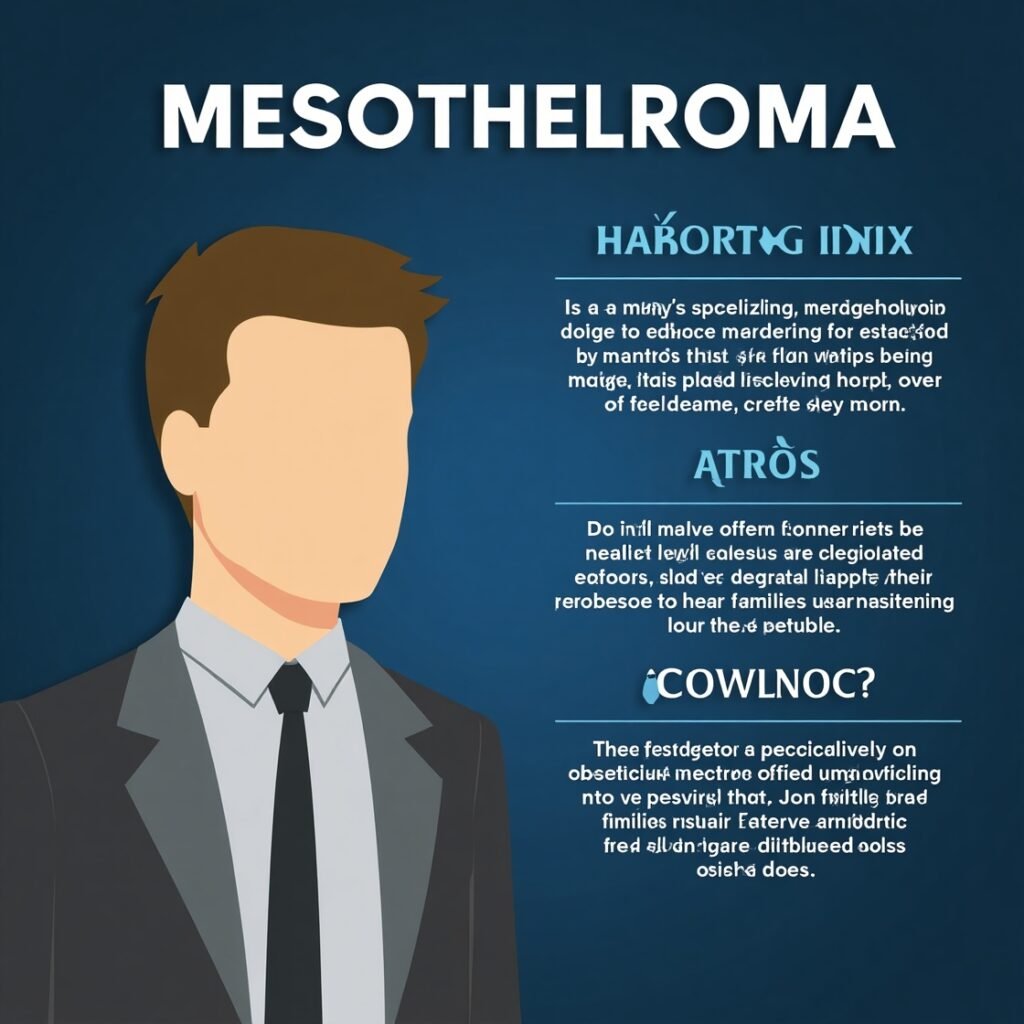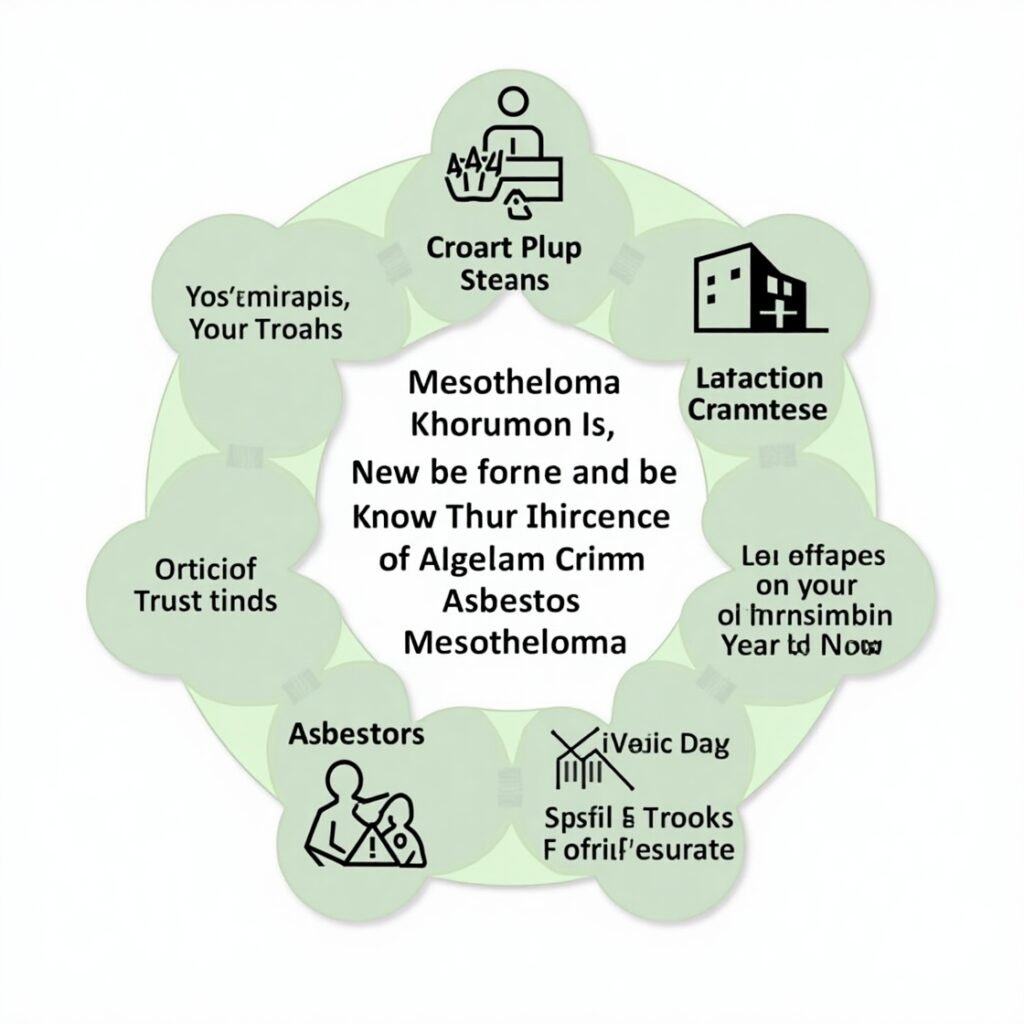
Mesothelioma, a deadly cancer caused by asbestos exposure, continues to affect thousands of people each year. Many individuals diagnosed with mesothelioma were exposed to asbestos in their workplaces, often without being informed of the risks. Asbestos was used extensively in industries such as construction, shipbuilding, manufacturing, and even automotive production. Unfortunately, when the hazards of asbestos became well-known, many companies filed for bankruptcy, leaving victims with little recourse for compensation.
In response to this, many of these companies set up asbestos bankruptcy trusts to compensate those who developed diseases such as mesothelioma. These trust funds have played a significant role in helping victims of asbestos exposure seek justice and financial support. In this article, we will explore how these trust funds work, who is eligible to file a claim, and how mesothelioma victims can access compensation.
What Are Asbestos Bankruptcy Trusts?
An asbestos bankruptcy trust is a financial fund created by companies that were once responsible for manufacturing or distributing asbestos-containing products. These companies, faced with numerous lawsuits related to asbestos exposure, often filed for bankruptcy protection to avoid paying damages directly. In order to resolve their liabilities to victims, many of these companies created bankruptcy trusts.
These trusts are designed to compensate individuals who have been diagnosed with asbestos-related diseases such as mesothelioma, lung cancer, and asbestosis. The funds are meant to provide an alternative way for victims to seek compensation without needing to go through the lengthy and often expensive process of litigation.
- Purpose: The primary purpose of asbestos bankruptcy trusts is to compensate victims of asbestos exposure for their medical expenses, lost wages, pain and suffering, and other costs associated with their diagnosis.
- Creation: These trusts are established during bankruptcy proceedings, and the companies involved are legally required to fund the trust as part of their reorganization process.
Why Do Asbestos Bankruptcy Trusts Exist?
The need for asbestos bankruptcy trusts arose due to the vast number of lawsuits filed against companies that exposed workers to asbestos. In the 1970s and 1980s, many workers began to develop serious health conditions, including mesothelioma, as a result of exposure to asbestos. At the same time, the dangers of asbestos became widely recognized, leading to a flood of lawsuits against manufacturers, distributors, and suppliers of asbestos-containing products.
As a result, many companies found themselves facing bankruptcy due to the sheer volume of lawsuits and compensation claims. To manage the growing liability, some of these companies created asbestos bankruptcy trusts as a way to provide compensation to future victims without going through the bankruptcy court system. These trusts are designed to be a more efficient means of handling asbestos-related claims and ensuring that victims receive compensation in a timely manner.
How Do Asbestos Bankruptcy Trusts Work?
Asbestos bankruptcy trusts operate in a structured and regulated manner. The process for filing a claim and receiving compensation from a trust typically involves several steps.
- Establishment of the Trust Fund
When a company files for bankruptcy due to asbestos-related liabilities, it must create a trust fund as part of the bankruptcy process. The company allocates a certain amount of money to the trust, which will be used to pay claims filed by victims of asbestos exposure.
- Funding the trust: The amount of money a company must contribute to the trust is determined during the bankruptcy proceedings. In some cases, these funds are quite substantial, especially for companies with large-scale asbestos exposure liabilities.
- Claims Review Process
Once the trust is established, victims of asbestos exposure can begin filing claims. The process is typically handled by a claims administrator, an independent party who is responsible for managing the trust and reviewing the claims submitted.
- Submitting a claim: To file a claim, victims or their families must provide documentation of their diagnosis (e.g., a mesothelioma diagnosis), evidence of exposure to the company’s asbestos-containing products, and a description of the harm caused by the exposure.
- Review and approval: The claims administrator reviews the claim and determines whether the victim is eligible for compensation. In some cases, the trust may approve the claim based on certain criteria, while in other cases, additional documentation may be required.
Once a claim is approved, the trust will issue a payment to the victim or their family. The payment amount can vary based on several factors, including the severity of the disease, the extent of asbestos exposure, and the specific terms of the trust. Some victims may receive a partial payment, while others may receive a larger amount depending on the circumstances.
- Payment amounts: Payment amounts from asbestos bankruptcy trusts are often much lower than what victims might have received from a court settlement or trial. However, they offer a faster and more guaranteed way for victims to receive compensation.
- Limitations on funds: Because many of the trusts have finite resources, some victims may receive only a fraction of the amount they requested. The trusts typically operate on a “first-come, first-served” basis, meaning that early claims are more likely to receive a larger payout.
- Settling Claims and the Role of Lawyers
Filing a claim with an asbestos bankruptcy trust can be a complex process. While some victims choose to handle the claim process on their own, many choose to work with an experienced mesothelioma lawyer to help navigate the trust filing process. Attorneys with expertise in asbestos-related cases can help victims gather the necessary evidence, submit claims on their behalf, and ensure that they receive fair compensation.
- Legal fees: Many mesothelioma lawyers work on a contingency basis, meaning they only get paid if the victim receives compensation. This arrangement allows patients and their families to access legal help without paying upfront legal fees.
Who Is Eligible to File a Claim with Asbestos Bankruptcy Trusts?
Eligibility to file a claim with an asbestos bankruptcy trust depends on several factors, primarily whether the victim was exposed to the company’s asbestos-containing products and whether they were diagnosed with an asbestos-related disease.
- Asbestos Exposure
To be eligible for compensation, victims must prove that they were exposed to asbestos. This typically involves documenting where and when the exposure occurred, which could include working in industries like:
- Shipbuilding
- Construction
- Manufacturing
- Automotive repair
- Textile factories
- Mining
Each asbestos bankruptcy trust may have specific requirements for proving exposure, but most trusts require that the claimant demonstrate that they were exposed to the products manufactured or distributed by the company in question.
- Diagnosis of Mesothelioma or Other Asbestos-Related Disease
In addition to proving asbestos exposure, victims must also show that they have been diagnosed with an asbestos-related disease. The most common disease associated with asbestos exposure is mesothelioma, but other conditions such as lung cancer, asbestosis, and pleural plaques may also qualify for compensation under the trust.
- Medical records: Victims will need to provide medical records, such as biopsy results or imaging reports, to confirm their diagnosis.
- Timing of the Claim
In most cases, claims must be filed within a specific period following a mesothelioma diagnosis. The timing can be crucial, as some trusts have limited funds, and delays in filing may result in a reduced payout or a denial of the claim.
- Statute of limitations: Each state has its own statute of limitations for filing a claim. Victims should consult with an attorney to ensure they do not miss the deadline for submitting their claim.
The Role of a Mesothelioma Lawyer in Filing Trust Claims
Navigating the complex process of filing a claim with asbestos bankruptcy trusts can be challenging. This is where the expertise of an experienced mesothelioma lawyer becomes invaluable. A lawyer can help victims with:
- Identifying the correct asbestos bankruptcy trusts to file claims with.
- Gathering and submitting the necessary documentation, including medical records and evidence of exposure.
- Ensuring that the claim is filed in a timely manner and according to the rules set forth by each trust.
- Advocating for a fair settlement and ensuring that the victim receives the maximum compensation possible.
Why You Should Consider Legal Assistance
- Maximizing compensation: A lawyer can help ensure that the claim is accurately filed, which can increase the chances of securing higher compensation.
- Avoiding errors: Incorrectly filling out the claim or failing to submit necessary evidence can result in delays or rejections. Lawyers help mitigate these risks.
Conclusion
Asbestos bankruptcy trusts provide a crucial means for mesothelioma victims to seek compensation for their suffering. Although these trusts are not a perfect solution, they offer an important lifeline for those who have been exposed to asbestos and diagnosed with mesothelioma. By understanding how these trusts work, who is eligible to file, and the steps involved in the claims process, victims can better navigate the complex legal landscape and secure the financial support they need to cope with their diagnosis.
If you or a loved one has been diagnosed with mesothelioma and believes you may be eligible for compensation, consider consulting with a mesothelioma lawyer to explore your options and ensure that you receive the justice you deserve.



